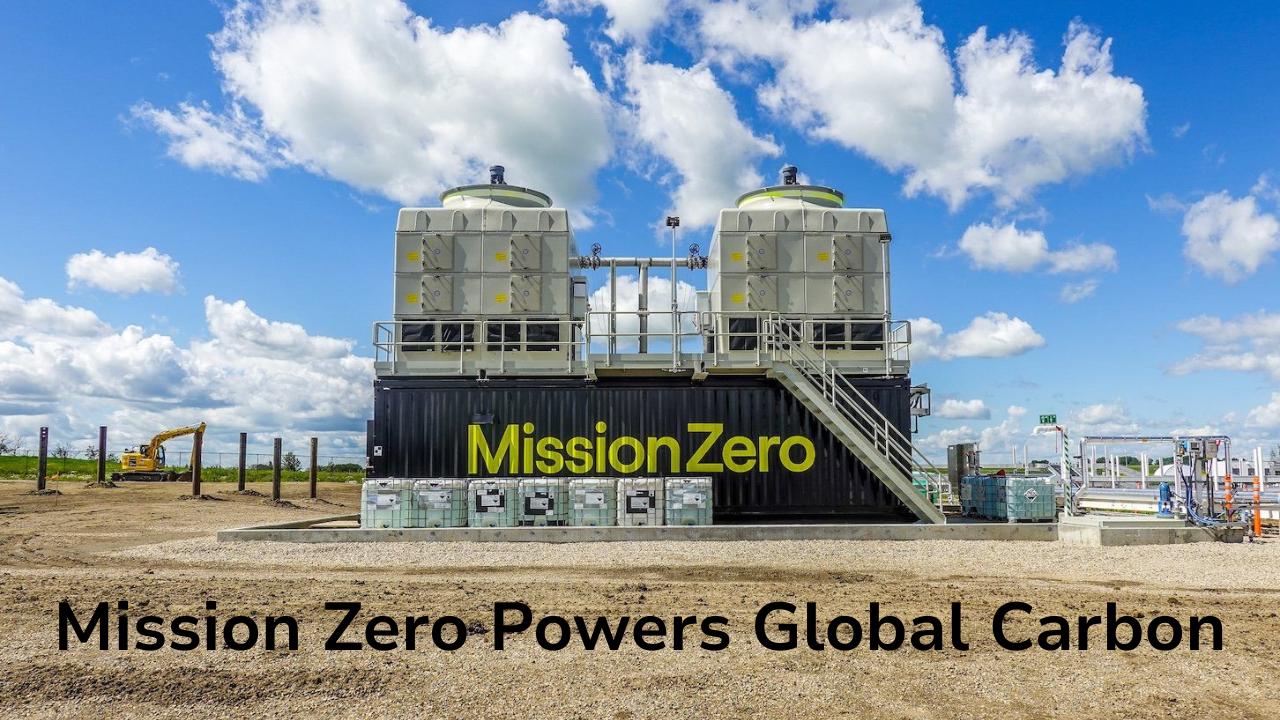The challenges of climate change are growing by the day. Extreme weather events and rising temperatures everywhere are making the climate crisis more urgent, so innovative solutions that can deliver measurable impact are needed. Mission Zero Technologies launched its third Direct Air Capture (DAC) system in Canada in August 2025, marking an important step in global carbon reduction efforts.

Mission Zero’s aim is not just to capture CO₂, but to provide sustainable carbon removal solutions that are reliable for companies, governments, and communities. These systems not only reduce climate impact but also provide confidence to regulatory and corporate stakeholders through verified and transparent reporting.
The demand for DAC systems is continuously increasing to meet global net-zero commitments. Mission Zero’s strategy ensures that every installation is scalable and minimizes operational efficiency, energy use, and environmental footprint. In this article, we will learn in detail about Mission Zero’s third DAC system, understand its technology, environmental impact, and future plans.

Overview Table
| Article | Mission Zero Powers Global Carbon Cuts with Third Direct Air Capture System |
| Nation | Canada |
| Effective Dates | August 2025 |
| Department | Mission Zero Technologies / Deep Sky Alpha Project |
| Benefit accessors | Climate change mitigation stakeholders; companies seeking verified carbon removal; environmental regulators |
| Official Website | https://www.missionzero.tech |
How the Third Direct Air Capture System Works
Mission Zero’s third DAC system captures CO₂ from ambient air. The system uses a proprietary chemical process that binds carbon, which is then compressed and sent to permanent storage. This storage occurs in deep geological formations, trapping CO₂ for centuries and effectively mitigating climate risks. The system is modular, making scale-up or replication easily possible.
The system captures thousands of tons of CO₂ annually. And as global DAC networks expand, the cumulative carbon removal impact becomes significant, helping to meet voluntary and regulatory targets.

According to reports from Mission Zero, the third system is 15% more efficient than the first two systems. These improvements are due to advanced sorbent materials and optimized airflow design, which reduces both energy costs and carbon footprint.
Environmental Impact and Carbon Removal Potential
Mission Zero’s DAC systems permanently remove CO₂. According to climate models, every ton of CO₂ removed can reduce extreme weather events, preserve biodiversity, and protect vulnerable ecosystems.

The third system alone will remove thousands of tons of CO₂ annually. When combined with the cumulative impact of the first two systems, the overall carbon removal is quite substantial, and verified reporting ensures transparency and accountability.
Experts say that DAC alone cannot solve climate change. But when combined with renewable energy deployment and sustainable land practices, achieving net-zero goals becomes realistic. Mission Zero’s innovation boosts climate mitigation efforts as a scalable, replicable solution.

Public and Expert Reactions
Scientists, environmentalists, and industry experts have responded positively following Mission Zero’s third DAC system launch. Experts emphasize that private sector innovations complement government climate action and help meet carbon reduction targets.
Local residents are also supportive. They highlighted economic benefits, such as job creation in high-tech carbon removal sectors and opportunities for the local services industry. Along with the environmental impact and direct benefits of cleaner air for communities.
Dr. Emily Carter, climate technology researcher, said: “The deployment of the third DAC system is a milestone.” This is proof that ambitious large-scale carbon capture projects have now moved from the experimental phase to operational reality and can deliver real climate mitigation solutions.
Future Expansion Plans
Mission Zero’s future plans are quite ambitious. The company has announced that additional DAC systems will be deployed in North America and Europe over the next five years. These sites will be strategically selected to maximize carbon removal efficiency and ensure renewable energy integration.
The partnership with Deep Sky Alpha will continue in R&D. The focus will be on research into enhanced capture materials, AI-driven optimization, and transparent carbon accounting. This will continuously improve the technology and inspire Mission Zero and companies and governments to adopt DAC solutions.
Snapshot Table
| Aspect | Details |
| Technology | Electrochemical, heat-free, modular DAC system |
| CO2 Removal Capacity | 250 tonnes per year |
| Energy Source | Solar-powered |
| Deployment Time | 10 months from delivery to operation |
| Cost Reduction | 60% compared to 2023 deployment costs |
| Future Plans | Global expansion, integration with building materials, sustainable fuels |
Wrap-Up Paragraph
Mission Zero Technologies’ third Direct Air Capture system is a significant step in global carbon removal efforts. With this deployment, the company has proven the scalability and efficiency of its technology. In the future, Mission Zero plans to deploy its technology in additional regions, which will be another step in the fight against climate change.
FAQs
1: How does Mission Zero’s DAC system work?
This system captures CO₂ through an electrochemical process without using heat. Its modular design makes it easily scalable.
2: What is the Deep Sky Alpha project?
It is a carbon removal hub located in Alberta, Canada, where multiple DAC technologies are being tested.
3: What is Mission Zero’s future expansion plans?
The company wants to deploy its DAC technology globally and enter sectors such as building materials and sustainable fuels.
4: What is the environmental impact of this technology?
This system captures 250 tonnes of CO₂ annually and stores it permanently in underground storage, which aids in climate change mitigation.
5: How was the cost reduction achieved?
Through modular design and efficient supply chain management, Mission Zero has reduced costs by 60% by implementing lessons learned from its previous deployments.

